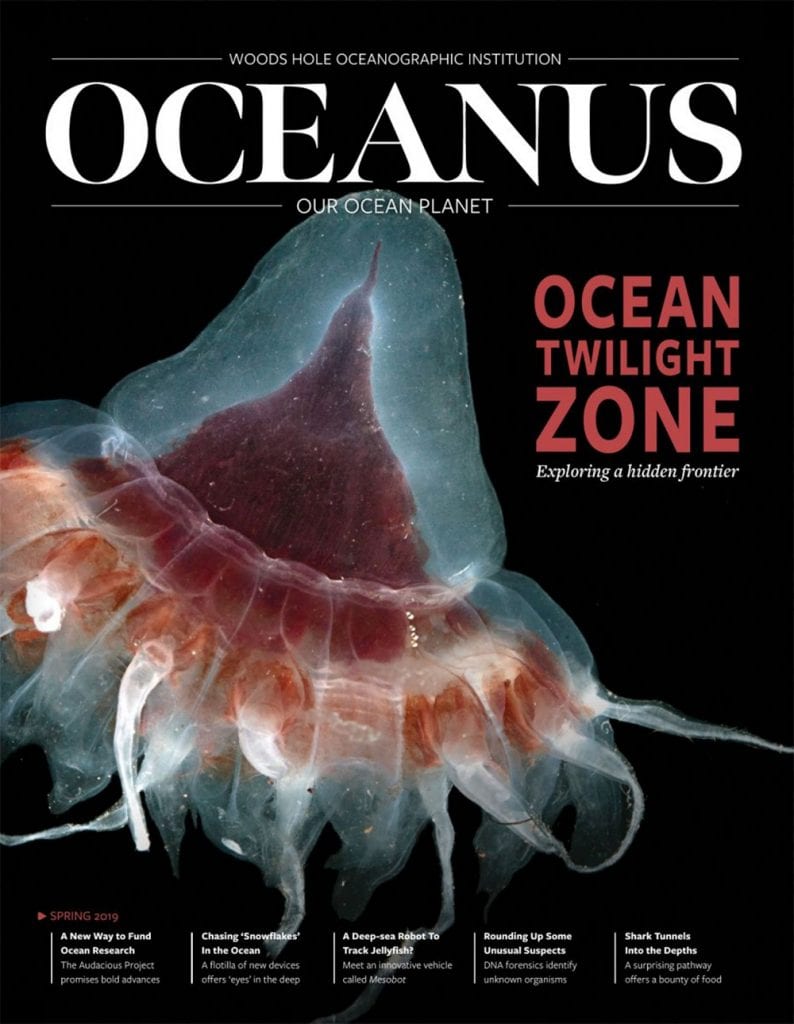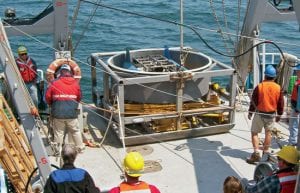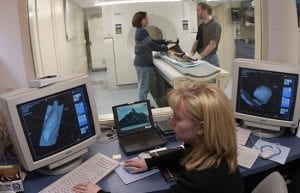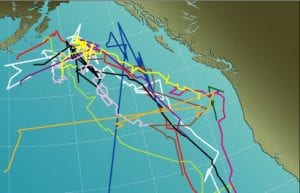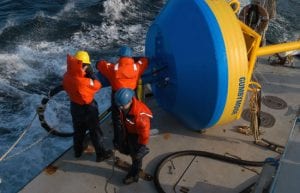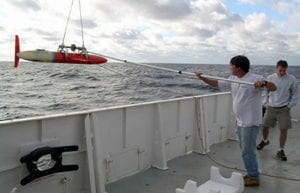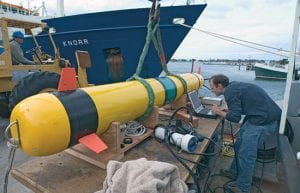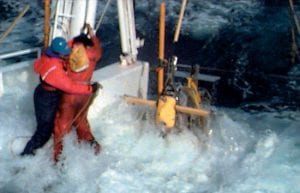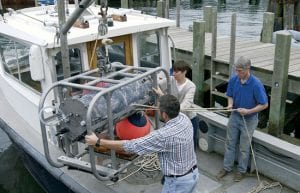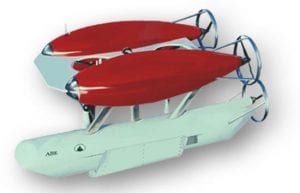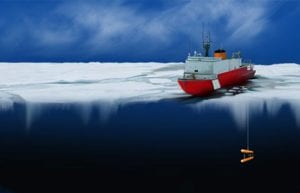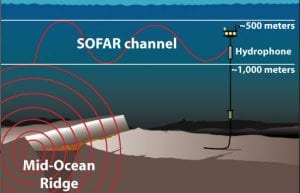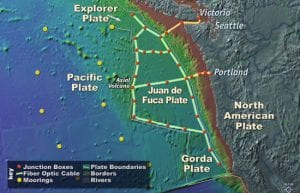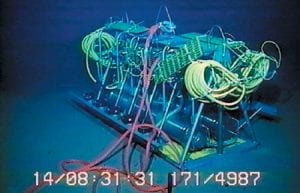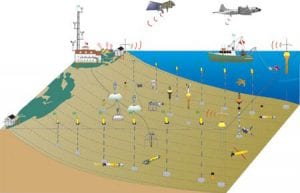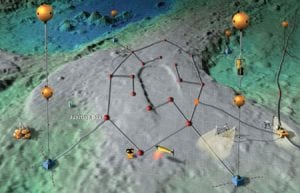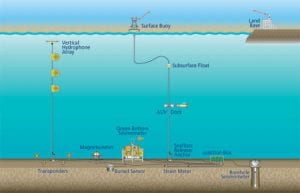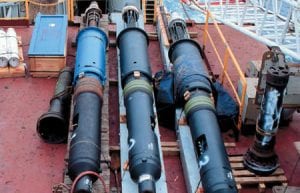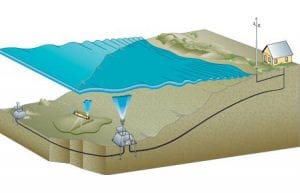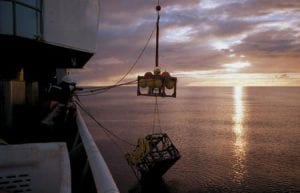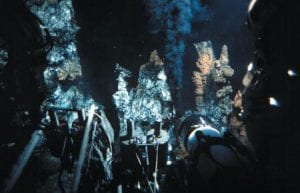Ocean Tech
From Ancient Roman Omens, New Data on Solar Activity
Because aurorae, comets, and meteors were omens, the Romans and other ancient peoples observed the sky fastidiously, recording heavenly observations alongside detailed accounts of earthly events and military triumphs. Twenty centuries later, those historical records have become scientific data for researchers such as WHOI Senior Scientist Andy Solow.
Sensors to Make Sense of the Sea
It is difficult and expensive to go to sea, hard to reach remote oceans and…
How to See What Whales Hear
On summer nights, if you sit quietly at the edge of a field or watch…
A Lone Voice Crying in the Watery Wilderness
And speaking of whales, here is a story of whales speaking—or more precisely, one whale,…
What Could a Tsunami Network Look Like in the Future?
The Deep-ocean Assessment and Reporting (DART) system is battle-tested and operational, so it makes sense…
A Glide Across the Gulf Stream
News of the first successful Gulf Stream crossing by a glider last November—and the launching…
Robo-Sailors
In the mid-1990s, the Navy began funding research for small, robotic vehicles to perform unmanned…
The Cacophony on the Coast
Unlike light, sound travels efficiently through water, and the Navy uses sound to monitor what's…
The New Wave of Coastal Ocean Observing
Estuaries are the borderlands between salt and freshwater environments, and they are incredibly diverse both…
Realizing the Dreams of da Vinci and Verne
Leonardo da Vinci made the first drawings of a submarine more than 500 years ago,…
Unique Vehicles for a Unique Environment
For climatologists and physical oceanographers, it is often said that the Arctic is a canary…
Ears in the Ocean
If you sought to delve into the forces that drive and shape the face of…
Seeding the Seafloor with Observatories
Scientists extend their reach into the deep with pioneering undersea cable networks H2O (Hawaii-2 Observatory)…
Voyage to Vailulu’u
It was like a pirate’s treasure map. A dotted line clearly showed the trail, but…
Seeding the Oceans with Observatories
Ship-borne expeditions have been the dominant means of exploring the oceans in the 20th century.…
A Well Sampled Ocean
Unlike the oceans, the sky is relatively visible and accessible to us. But in the…
NEPTUNE: A Fiber-Optic ‘Telescope’ to Inner Space
NEPTUNE is a proposed system of high-speed fiber- optic submarine cables linking a series of…
Seafloor to Surface to Satellite to Shore
The next great leap in our understanding of the earth-ocean system will require us to…
Plugging the Seafloor with CORKs
Hidden beneath the seafloor throughout most of the world's oceans lies a massive, dynamic plumbing…
Outposts in the Ocean
Oceanographers and climatologists have something in common with politicians and stock market analysts: They are…
New Coastal Observatory Is Born
The Martha's Vineyard Observatory will have sensors mounted on two seafloor nodes, at depths of…
Putting H2O in the Ocean
A major obstacle impeding our ability to understand many of the earth's fundamental, ongoing dynamics--quite…
ALISS in Wonderland
In 1985, Cindy Van Dover, then a graduate student in biology in the MIT/WHOI Joint…

